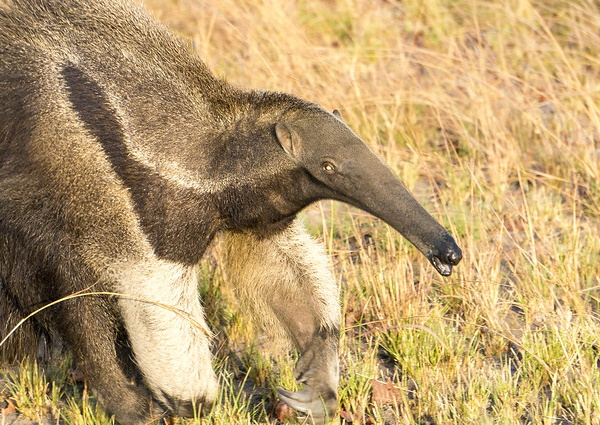Anteaters, while outwardly bizarre looking, are prime examples of nature’s creatures evolving over millions of years to best utilize a distinct source of nutrition. In fact, these 10 “termite terminators” have perfected the art of ant-eating to such a fine degree they can eat little else, which isn’t a bad thing at all considering ants comprise up to 25% of Earth’s total animal biomass.
Giant Anteater
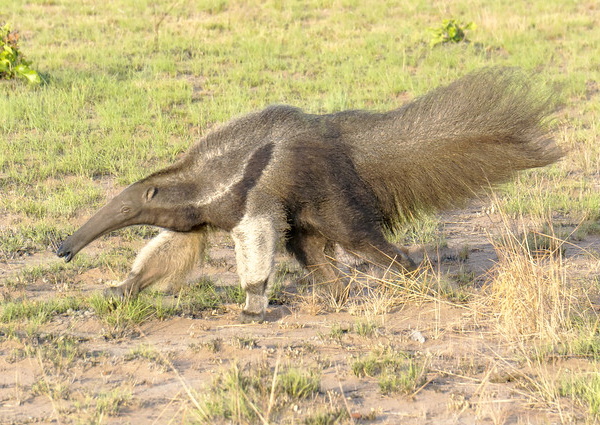 (images via Dan Sloan)
(images via Dan Sloan)
Giant Anteaters aren’t really gigantic though they’re by far the largest of the four main species of the suborder Vermilingua (Latin for “worm tongue”). Native to South and Central America, Giant Anteaters are about the size of an average German Shepherd dog. Add in a long, bushy tail and you’re looking at a total length of up to 7 feet or 2.1 meters.
Giant Anteaters are toothless but possess wickedly sharp claws on their front feet. They can consume roughly 30,000 ants and/or termites daily by slurping them up with a sticky 24-inch (61cm) long tongue. They have few natural predators but are vulnerable to cougars, jaguars… and transport trucks.
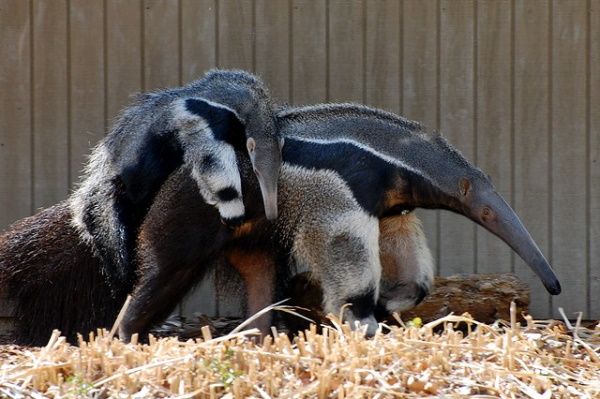 (image via: Bradley Buhro)
(image via: Bradley Buhro)
Giant Anteaters bear one offspring at a time and the babies look a lot like the adults, but in miniature. A baby Giant Anteater will spend most of its first year clinging to its mother’s back, happily snapping up any stray ants she happens to miss.
Silky Anteater
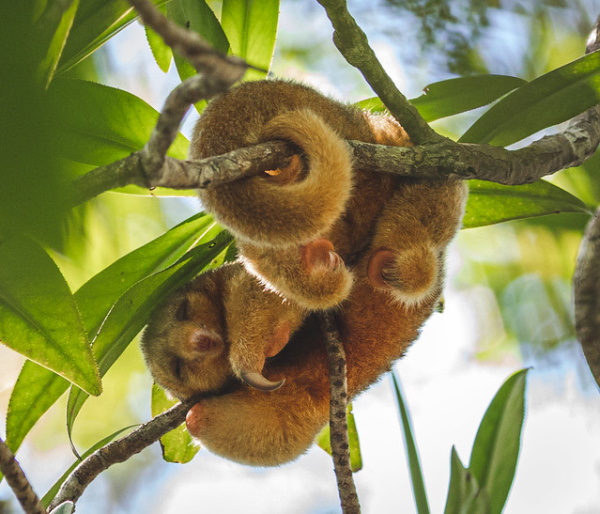 (image via: michael bamford)
(image via: michael bamford)
The Silky or Pygmy Anteater is also found in South and Central America but in more heavily forested areas, compared to its Giant Anteater cousins. It’s also much smaller, weighing less than a pound and only growing up to 17.7 inches (about 450mm) in length.
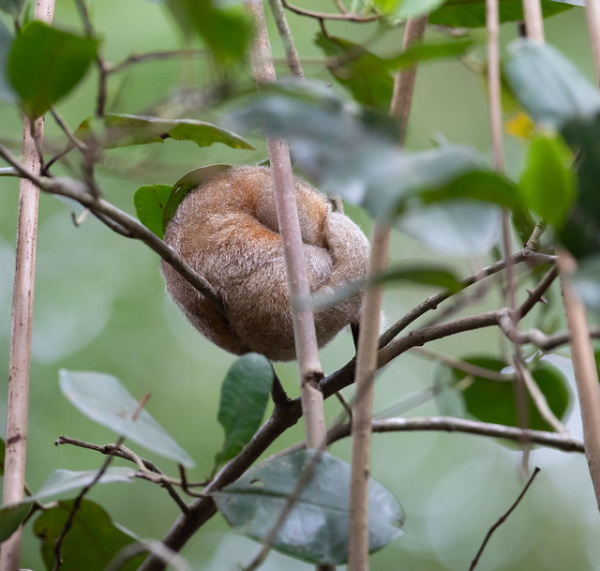 (image via: John Mangold)
(image via: John Mangold)
The nocturnally active Silky Anteater is rarely seen, though zoologists do not consider it to be a threatened species. That may change as more isolated and impenetrable reaches of the upper Amazon become, er, less isolated and more penetrable.
Northern Tamandua
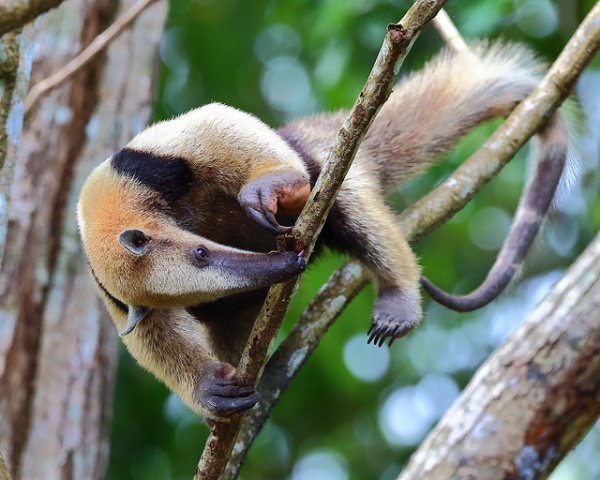 (image via: ryanacandee)
(image via: ryanacandee)
The Northern Tamandua can be found from southern Mexico down to the Pacific coastal forests of Ecuador and Peru. With its long and sticky tongue, complete lack of teeth and a mainly hairless prehensile tail, the Northern Tamandua is perfectly adapted for living in jungle forests teeming with ants and other insects.
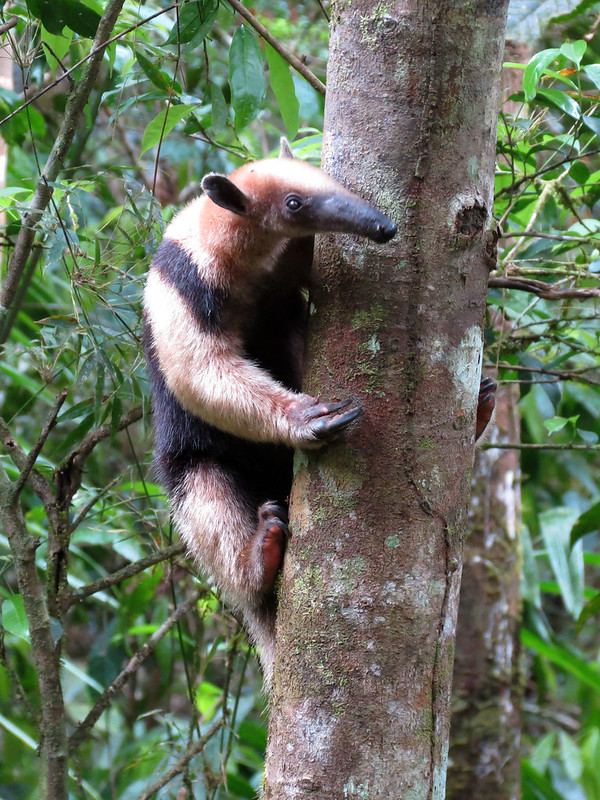 (image via: Katja Schulz)
(image via: Katja Schulz)
Northern Tamanduas are smallish creature that can grow up to 50 inches (130cm) long, including their tails. The Northern Tamandua has off-white to pale yellow fur with a contrasting “sweater vest” patch of deep black – it’s the Mister Rogers of anteaters!
Southern Tamandua
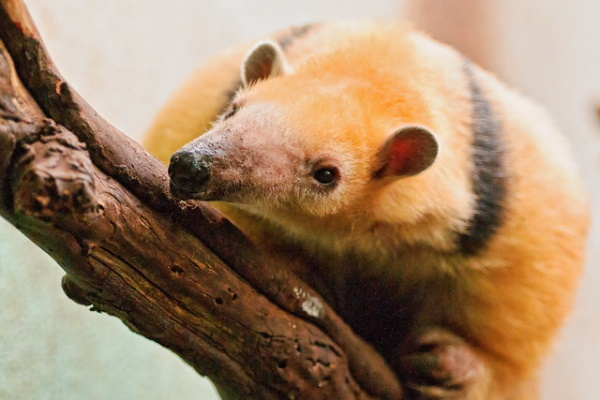 (image via: Tambako The Jaguar)
(image via: Tambako The Jaguar)
The Southern Tamandua, also known as the Collared Anteater or Lesser Anteater, is found over a wide range of South America including the entirety of Brazil. Like most other anteaters, it has no teeth but is equipped with sharp claws that make short work of ant and termite nests it sniffs out in rainforest trees. The Southern Tamandua will supplement its diet with bees on occasion. Bees, my God.
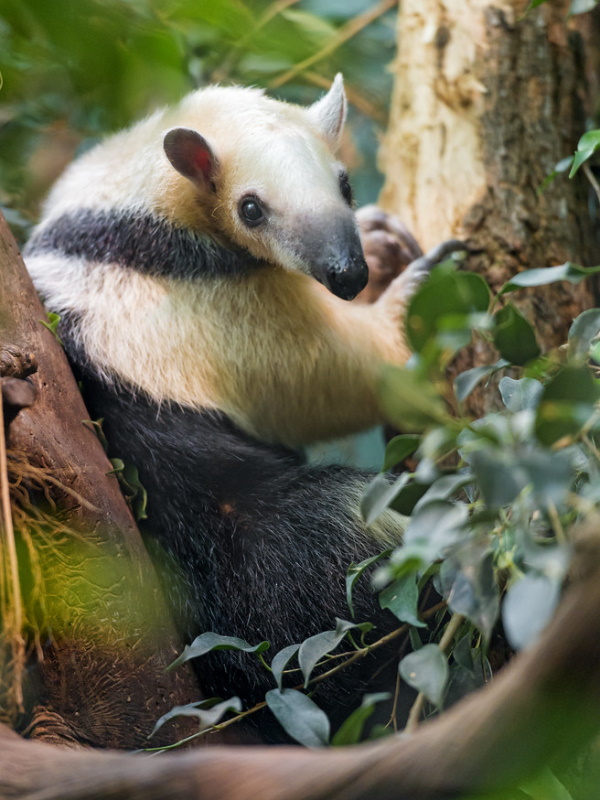 (image via: Tambako The Jaguar)
(image via: Tambako The Jaguar)
Lately, it seems that anteaters like the Southern Tamandua have appeared on the radar of people looking for ultra-exotic pets. Perhaps they haven’t heard that anteaters like these are able to spray an exceptionally foul-smelling mist from their anal glands. Besides that, does PetSmart even stock Purina Anteater Chow?
Giant Armadillo
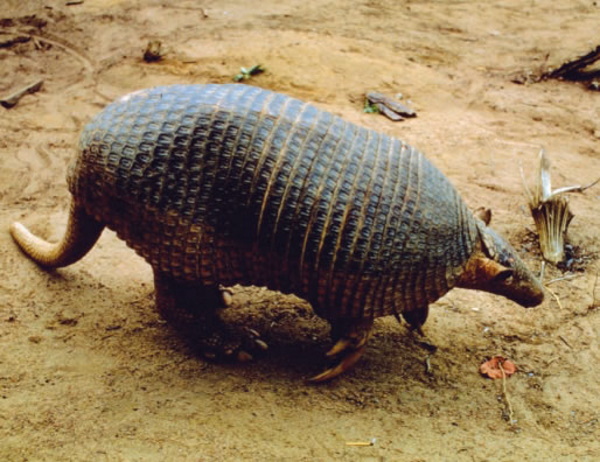 (image via: amareta kelly)
(image via: amareta kelly)
The Giant Armadillo may not be a pure, classic, capital-A “Anteater” as such. That said, the major portion of its diet consists of ants, grubs, and especially termites whose nests it digs deep into with tough, dedicated claws. Weighing up to 70 pounds (over 30kg), the Giant Armadillo is the largest member of the Armadillo family. Its range covers much of South America but it’s considered to be a vulnerable species.
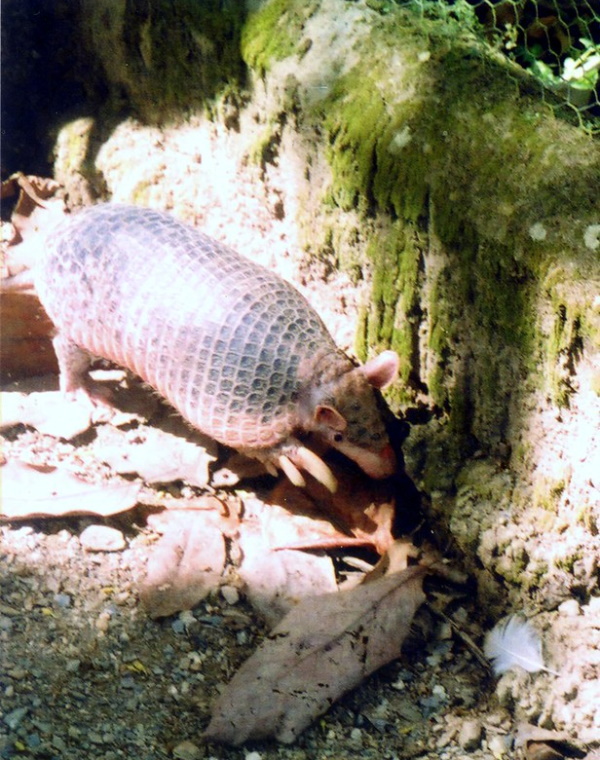 (image via: barloventomagico)
(image via: barloventomagico)
The Los Ocarros zoo park in Villavicencio, Colombia, features Giant Armadillos and acts as an educational resource for those interested in preserving this unusual creature. Humans are its only predators and although the Giant Armadillo is an insectivore for the most part, ranchers consider it a pest due to its disruptive digging.
Pink Fairy Armadillo
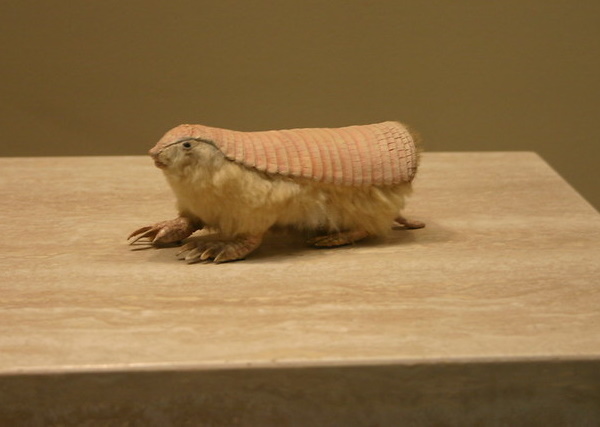 (image via: Ryan Somma)
(image via: Ryan Somma)
The Pink Fairy Armadillo doesn’t look like your average armadillo… or most anything else for that matter. This smallest of the armadillos is just 3.5 to 4.5 inches (90–115 mm) long, and spends most of its time underground “swimming” through loose, sandy soil. The Pink Fairy Armadillo is unusual for armadillos in that its armored back plates aren’t attached to its bones along its length; only at the back end. Speaking of which, this curious creature’s posterior is also armor-plated and acts as sort of a “plug”: when danger threatens, the creature dives head-first into its burrow.
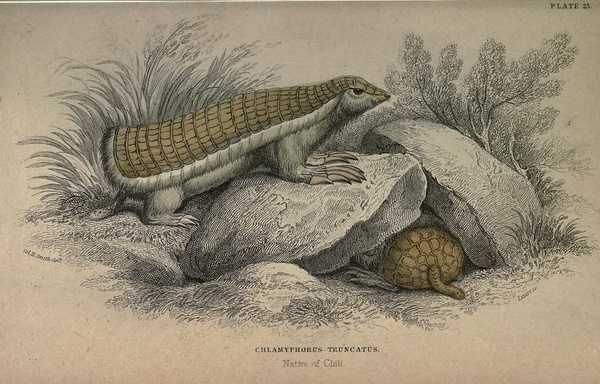 (image via: Biodiversity Heritage Library)
(image via: Biodiversity Heritage Library)
Since so little is known about the Pink Fairy Armadillo’s lifestyle, reproduction rate and population count, the IUCN has given up trying to pinpoint its vulnerability status preferring to go with “Data Deficient”. The fact that the creatures live only in a small area of central Argentina, however, raises concerns for their future in the face of incremental habitat loss.
Aardvark
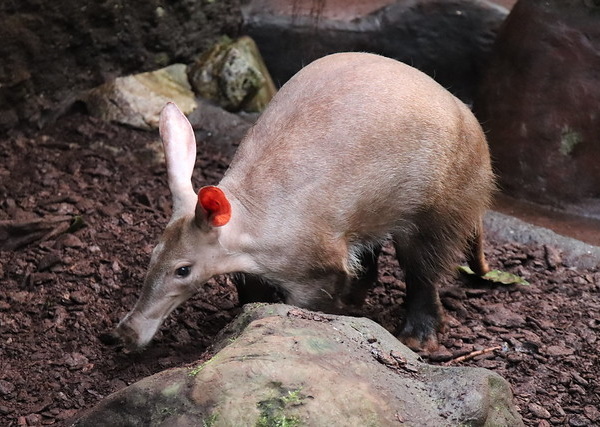 (image via: Theo Stikkelman)
(image via: Theo Stikkelman)
The Aardvark (“Earth Pig”) is one of the few animal names derived from the Afrikaans language of South Africa. With their pig snouts, mule ears and pink wrinkly skin, aardvarks can appear shockingly ugly to some. Found only in Sub-Saharan Africa, aardvarks eat termites almost exclusively, leading to their being considered “formicivores”. On occasion they will eat vegetation for its water content but only the so-called “Aardvark Cucumber” will do. That’s actually a good thing for the Aardvark Cucumber as this odd, underground-fruiting plant depends on aardvarks to spread its seeds.
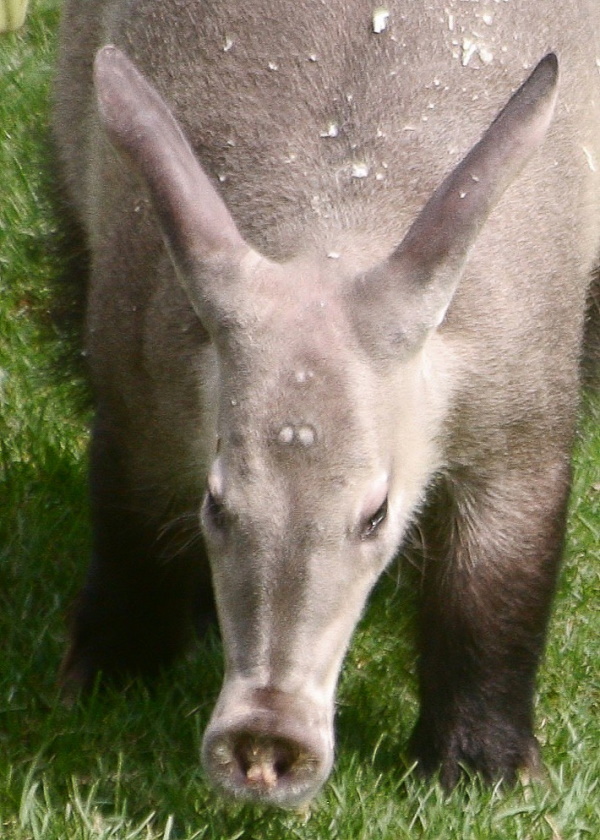 (image via: Jean)
(image via: Jean)
An aardvark‘s skin is naturally a pale, yellowish-gray hue but their wrinkled hide quickly takes on the color of the soil in their stomping grounds. You might not want to look like Pigpen from Charlie Brown but this type of acquired camouflage helps aardvarks blend into their surroundings and avoid being seen by some of Africa’s more fearsome large predators.
Numbat
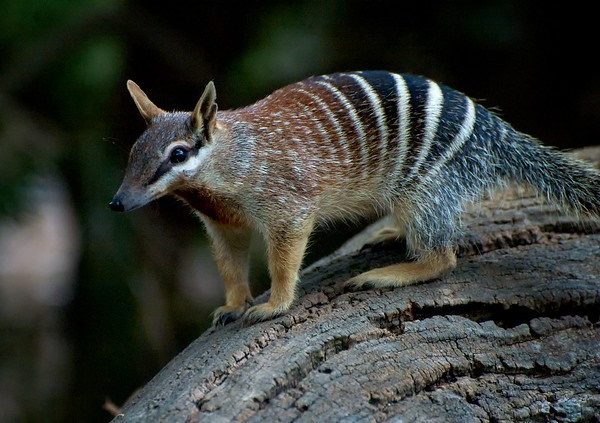 (image via: dilettantiquity)
(image via: dilettantiquity)
The Numbat or Banded Anteater is a day-active marsupial termite-eater that was once relatively common throughout the Australian continent. Some zoologists have speculated Numbats may have an ancestral relationship with the extinct Thylacine or Tasmanian Tiger, as both species feature an unusual pattern of contrasting stripes running laterally across the lower back and rump. The introduction of cats, foxes and dogs led to a sharp reduction in the number of Numbats, and by the 1970s less than 1,000 remained in the wild. Efforts to reduce the number of foxes in particular have helped wild Numbat populations bounce back to around 3,000 but it is still listed as an endangered species.
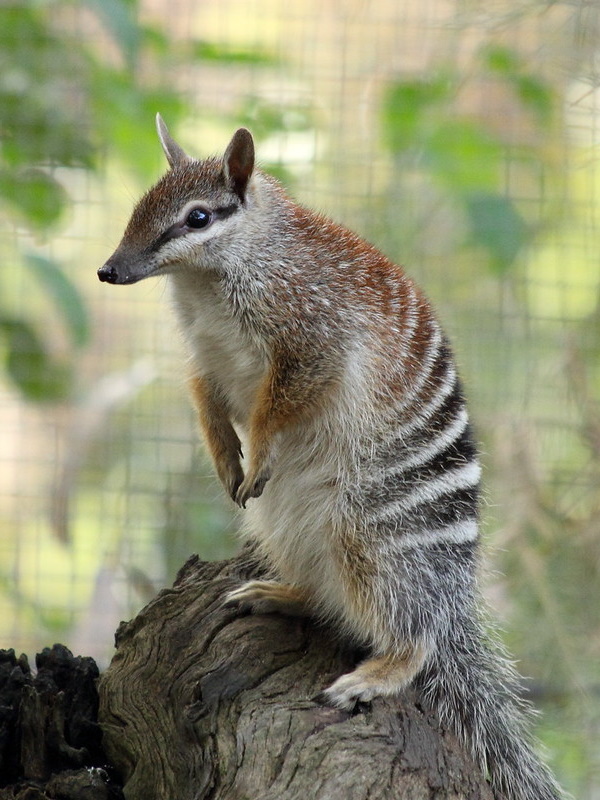 (image via: S J Bennett)
(image via: S J Bennett)
Numbats have evolved long, sticky tongues that help them eat ants and termites but their digging claws are no match for rock-hard termite mounds. They get around this deficiency by digging into the softer soil around the mounds, intercepting termite tunnels and unearthing the termites within them.
Echidna
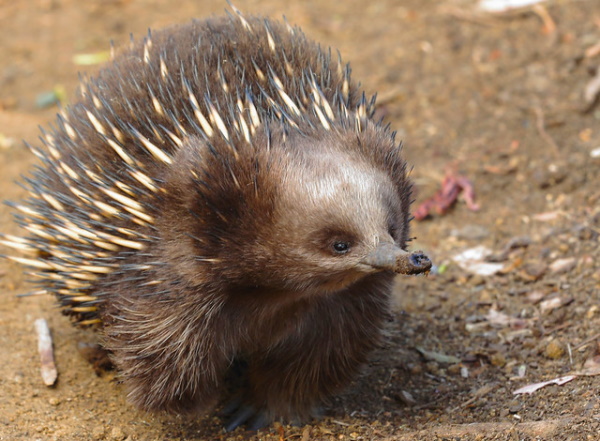 (image via: paweesit)
(image via: paweesit)
The Echidna or Spiny Anteater, is a monotreme. Along with its fellow monotreme the Platypus, the Echidna is the only mammal that lays eggs instead of bearing live young. Native to Australia and New Guinea, the name “Echidna” is derived from Greek mythology in which Echidna is described as the “Mother of all Monsters”. Take one look at an Echidna and you’ll be hard-pressed to disagree. Echidnas have made the leap into pop culture – surprising for a creature that looks like it wouldn’t leap if you shot 10,000 volts through it. “Knuckles the Echidna” first appeared in 1994, in the Sonic the Hedgehog video game series, as a rival for Sonic. Knuckles doesn’t look much like an actual Echidna, however, which was likely intentional and probably for the best.
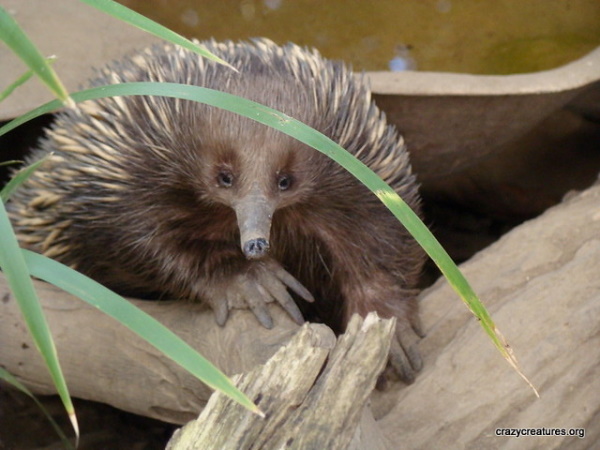 (image via: Laurens)
(image via: Laurens)
There are four recognized species of Echidna, with the Short-Beaked Echidna (above) subsisting entirely on ants and termites. Their strategy in case of attack by predators is to curl up into a ball, thus exposing their pointy spines. One trivia note about Echidnas: the male has a four-headed penis. After that, there’s really not much one can say, amiright?
Pangolin
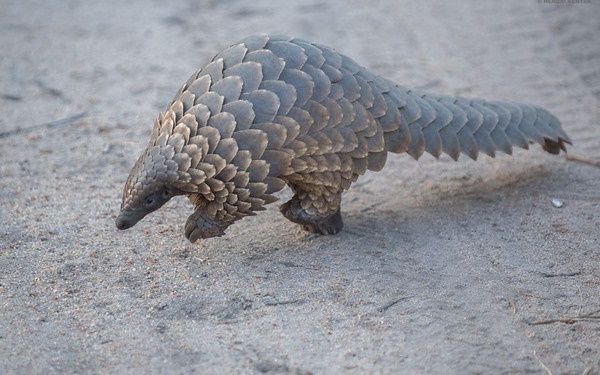 (image via: Adam Tusk)
(image via: Adam Tusk)
The Pangolin or Scaly Anteater is an odd-looking creature… come to think of it, are any of the aforementioned anteaters NOT odd-looking? But back to the pangolin. This scaled mammal can be found from Southeast Asia west to the Atlantic Ocean coast of Africa, split among seven different species. While not “threatened” in the statistical sense of the term, the IUCN has noted a great decline in many formerly abundant pangolin populations as a result of strong demand (mainly from China) for pangolin meat used for food and parts used in traditional medicines.
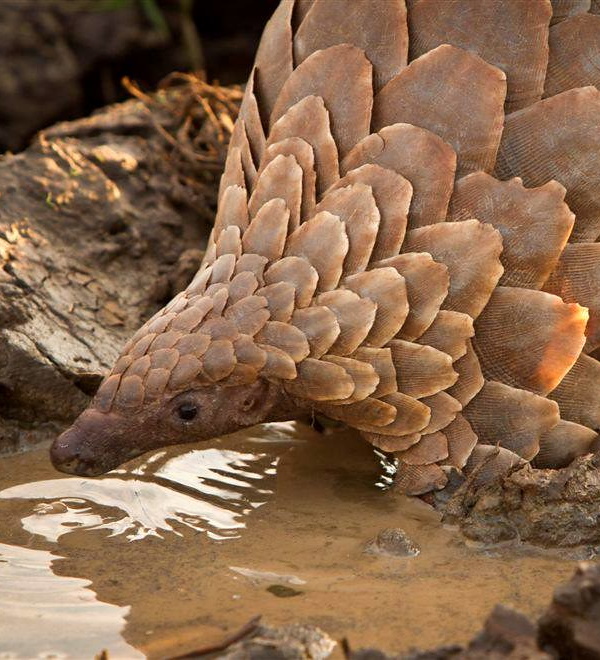 (image via: USFW Headquarters)
(image via: USFW Headquarters)
Pangolins can grow up to 40 inches (100cm) long and their front claws are so long they have to walk on their knuckles. They use these claws to tear open ant nests and termite mounds, upon which the toothless creatures employ a tongue up to 16 inches (40cm) long and just 1/4 inch (0.5cm) wide to lap up their prime nutritional resource. Pangolin scales are made of keratin – the same substance hair and fingernails are made of – and are razor-sharp at their trailing edges to discourage persistent predators.
Anteaters: too cool for school? Previously of interest only to zoologists, anteaters have hit it off with a new, internet-savvy generation thanks to a notorious 2008 meme. Several variations of an image of an anteater reared up in a natural “come at me bro” defensive posture, most overlaid with text reading “F U, I’m An Anteater”, symbolized the backlash against the perceived flood of cute dog and (especially) cat pics captioned with LOLspeak. The more you know!

